To answer this we need to understand very basic thing that is why do we need accounting?
Well, accounting is necessary for systematically recording financial business transactions, so that same can be used to know our financial position and profit and loss during a financial year. Here next question arises what will be use of such information (financial position and profit and loss)? And the answer is very obvious that, this information helps any business entity to control the business activities, take decisions, and communicate information to interested users who wants to know about our business position and health and some other agencies like government etc.
Since this information is made by business itself. Why outsiders (users) would believe on this information or in other words what is the reliability of the information? The answer is accounting principles and standards. Yes, because accounting is done by following set of accounting principle that are globally accepted and used. These accounting principles and standards are designed by experts and are modified with the experience and also are accepted globally these are uniform. These principles and standards are created to maintain consistency, comparability and understandability of financial statements among various entities.
Business Entity Concept
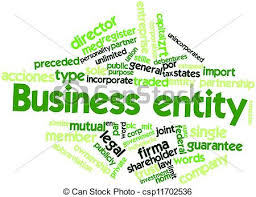
According to this concept, proprietor and business are two different entities. Business Entity concept ensures that transactions are recorded from the point of view of business, not proprietor. Now to understand it more clearly let us take one example that shows why we should adopt Business Entity Concept, If an owner take a building of three floors on rent for Rupees 30000/- per month, and uses one floor for personal residential purposes. In that case the rent being paid from the business cash will be 30,000 but the actual usage of building in business is two floors (rupees 20000/- per month). So, Only rupees 20,000 should be treated as expense of business not 30000 as it includes owner’s personal rent.
Dual Aspect Concept

Dual aspect concept says that every transaction in business has dual effect, means there are two aspects of any transaction. One is action of the transaction and other is reason of the transaction. Let us understand this by an example: If, business is paying salary to its employee it is reducing business cash, this is the action of transaction (reduction in cash) and the reason we are paying salary amount is expense (means we have availed services of that employee). So, each transaction we are recording in accounting must have followed this concept of dual aspect. Lets us take one more example to clarify our understanding: Bank loan has the one aspect that will increase our asset (cash) but on the other hand it will also increase our liability, this is second aspect.
Going concern assumption
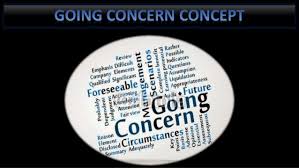
Nobody starts business with the target of winding up business in short period of time. So, this assumption is created and adopted for the processing of business transactions in accounting with the assumption that business started will continue for a longer period. On the basis of this assumption, we record and treat capital expenditure, that are expenditure on fixed assets or capital items that will be used in business for a longer period. To understand this better we can consider the example of depreciation. Depreciation is charged on fixed assets till the life of that asset. Without Going concern assumption, we will not be able to consider depreciation for its life.
Matching Principle

According to matching principle, expenses incurred in business must be charged to the income statement in the same accounting period in which the related revenue is earned. For example, A machine purchased for rupees 1,00,000 that has its estimated useful life of 10 years. Cost of 1,00,000 will not be charged in income statement on the same year when it was purchased, but will be charged for 10 years till it is being used in business. In that case, 10,000 per financial year for 10 years will be appropriate to charge in statement of account. So, Depreciation of fixed assets is charged to the profit & loss against its usage and useful life.
Money Measurement Concept
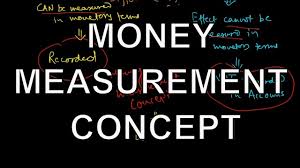
As per this concept all business transactions must be in terms of money. Thus, as per the money measurement concept, transactions which are of financial nature are only recorded in the books of accounts and non-financial transactions do not find any place in accounting books.
For example, sale of goods worth Rs.100000, purchase of raw materials Rs.200000, Rent Paid Rs.2000 etc. are expressed in terms of money, and so they are recorded in the books of accounts. But the transactions which cannot be expressed in monetary terms are not recorded in the books of accounts. For example, sincerity, loyality, honesty of employees are not recorded in books of accounts because these cannot be measured in terms of money although they do affect the profits and losses of the business concern.
Accounting Period
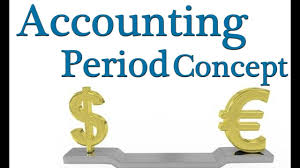
The life of the business is considered to be indefinite, but the measurement of income cannot be postponed for a very long period of time. Therefore, it is necessary to assess the performance or result of the accounting external reporting at a regular interval.
Hence a period of one year i.e. twelve months is considered as accounting period.
It may be a Calendar year (January to December) Or any period of one year.
In India, the accounting period begins on 1st April every year and ends on 31st March every year. This concept implies that at the end of each accounting period, financial statements i.e. profit & loss account and balance sheets are to be prepared. It helps business to know their performance as well as important for external users like Financial Institutes (Banks etc.), Investors, Government, Suppliers, Customer and other external users who are interested to know the results of a business.
Accrual Concept
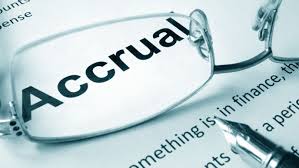
This concept implies that revenue is recognized in the period in which it is earned irrespective of the fact whether it is received or not during that period. For example, commission Rs. 2,000 earned in the year 2008, but received in cash in the year 2009, then the commission is to be taken as income for the year 2008 only, not as income of the year 2009.
Realization Concept
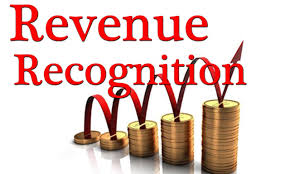
According to this concept, the revenue should be considered only when it is realized. Any business transaction should be recorded only after it actually taken place. Production of goods does not mean that the total production is sold, it should be recorded only when they are sold and cash realized or obligation created.
Objectivity Concept
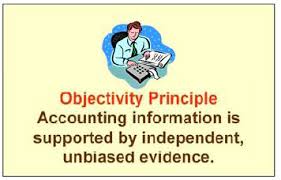
According to this concept all accounting transactions should be evidenced and supported by objective documents like vouchers, bills, letters, Pay-in-Slips, Receipts, invoices etc. This ensures transaction being recorded are free from any bias of the person recording it.
Materiality Concept
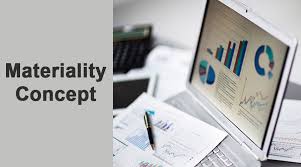
Materiality states that all material facts must be a part of the accounting process. But immaterial facts, i.e. insignificant information should be left out. The materiality of a transaction will depend on its nature, value and its significance to the external user. If the information can affect a person’s investing decision then it is definitely a material fact.
Consistency concept
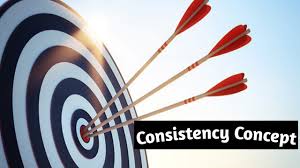
Once a business chooses to use a specific accounting method, it should continue using it on a go-forward basis. By doing so, financial statements prepared in multiple periods can be reliably compared.
Historical Cost Concept
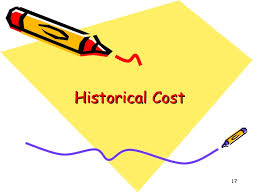
According to this concept, all assets are recorded in the books of accounts at their purchase price, which includes cost of purchase, transportation and installation and not at its market price. It means that fixed assets like building, plant and machinery, furniture, etc are recorded in the books of accounts at a price paid for them. For example, a machine was purchased by XYZ Limited for Rs.500000. An amount of Rs.2,000 were spent on transporting the machine. In addition, Rs.1000 were spent on its installation. The total amount at which the machine will be recorded in the books of accounts would be the sum of all these items i.e. Rs.503000. This cost is also known as historical cost.
Suppose the market price of the same is now Rs 90000 it will not be shown at this value. Further, it may be clarified that cost means original or acquisition cost only for new assets and for the used ones, cost means original cost less depreciation. The cost concept is also known as historical cost concept.

